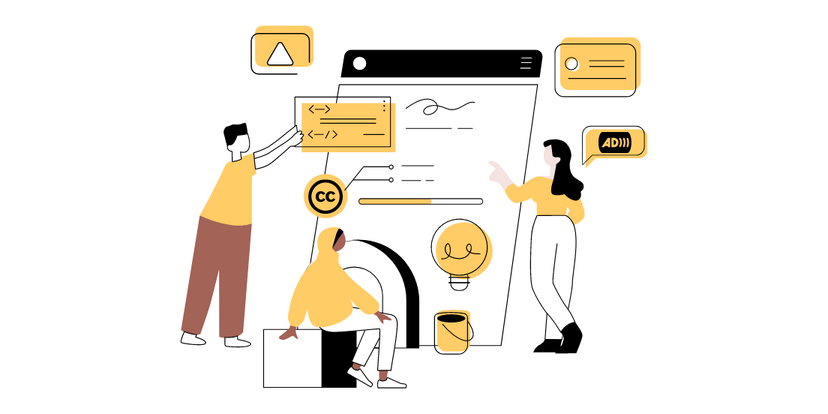Editor's Note: Thanks to our friends at 3Play Media for sharing how to make your content accessible for people with auditory improvements as we close out September. While Deaf Awareness month ends in September, the practical advice in this blog can help you create better, accessible content throughout the year.
September is Deaf Awareness Month, and despite the advances in access we’ve seen in recent years, many people with auditory impairments still can’t properly interact with media content online due to a lack of accessibility.
Services like closed captioning are one of the most well-known accommodations for the deaf and/or HOH, but they often lack the necessary level of detail or are sometimes entirely unavailable in modern formats, like social media or live events.
At 3Play Media, we’re experts in making content accessible to all – and we’re happy to share what we know! In this blog, let’s review the basics of digital accessibility for those with auditory impairments, from the content production process all the way through posting and presenting live.
Content Production
We always say that it’s easier to bake accessibility in from the beginning than it is to retroactively implement a solution, but many organizations face a lack of resources, staff, or strategy to feasibly support this.
Working with an accessibility partner is undoubtedly the easiest way to make sure your content is accessible. With the right accessibility services provider, you can use automated workflows that seamlessly integrate the services you need directly into your existing production process.
If budget is the primary constraint within your organization, it’s possible to write and export your own caption files using programs natively included on Mac and PC computers (called TextEdit and Notepad, respectively). Although it’s a more labor-intensive production method, creating DIY captions isn’t as complicated as you might think! To learn more, check out 3Play’s guide to creating SRT files.
For those looking to cut out a few steps, YouTube also offers a tool that automatically generates captions and their associated timecodes. However, output accuracy rates are often not sufficient enough to be considered ADA compliant when using automatic solutions without the involvement of a human editor. While YouTube’s tool can greatly reduce the amount of time and effort required from an inexperienced captioner, automatic solutions should never be independently relied upon.
Social Media
Nowadays, social media is practically inescapable. While some popularly used platforms (like YouTube) have evolved to include native captioning tools and other accessibility services, others still leave much to be desired.
For example, Instagram recently expanded their captioning feature to include stories, reels, and feed posts – except the captions are auto-generated, and do not currently support user revision.
By comparison, TikTok does allow users to edit their auto-generated captions. While this is preferable for individual, user-created content, the capability has not been extended to popular, trending sounds (most of which contain song lyrics or audio clips from TV/film).
To work around platform inaccessibility, open captions are our favorite work around. By definition, open captions are written directly on the video content itself and therefore can’t be toggled on/off by the viewer. Using this method, content creators can circumvent their desired platforms not supporting captions natively.
Live events
Within the past few years, virtual live events have exploded in popularity. Originally the result of necessity, the format has stuck around as a matter of convenience.
Platforms like Zoom advanced quickly to meet demand, making auto-generated captions available to all users almost a year ago. While this was a big step for expanding accessibility, you can probably see where we’re going with this…
For people with auditory impairments, auto-generated captions are not enough to constitute an accessible accommodation. To ensure top-quality captioning at your event, we recommend implementing a live professional solution. This process involves highly skilled human captioners who are writing captions in real time.
In addition to real-time captions, sign language interpretation could also benefit your deaf or HOH audience members. However, it’s important to note that sign language is not universal! There are over 300 signed languages in use today, but even this doesn’t mean that every person with auditory impairments can speak or understand sign language.
If you’re not sure where to start or which accommodations would be beneficial at your next event, send out a form polling registrants! Don’t be afraid to ask people what they need – after all, each individual is the expert in what works best for them.
Whether virtual or in-person, some popularly requested event accommodations include:
- Assistive listening devices
- Closed captioning
- Reserved front-row seat
- Large print
- Advance copy of slides to be presented
- Wheelchair access
- Dietary restrictions
- Other: leave a blank line in case of a write-in request
To view more educational resources from 3Play Media visit their site here.
If you are in the process of planning your accessibility initiative, we've created an easy guide that breaks it down into phases for you. Download our Web Accessibility Checklist.






